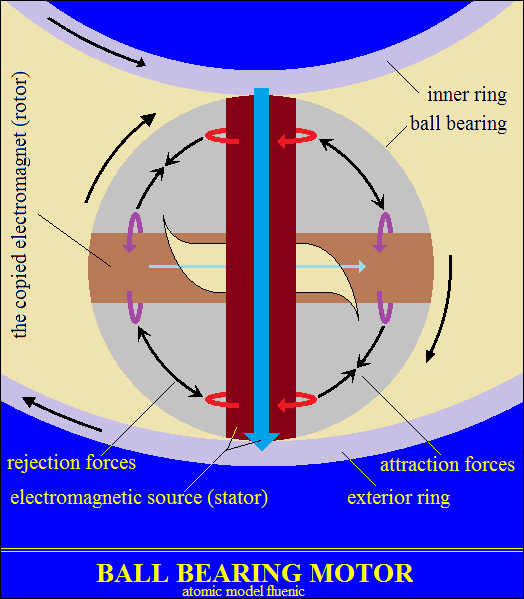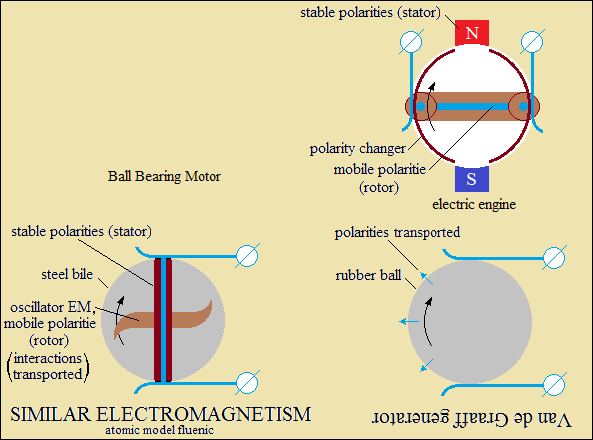Effect
motor, within bile of bearing
Operating characteristics of the Ball Bearing motor:
- Operates with low voltage and high intensity in DC and AC.
- It rotates only with a prior impulse.
Description of the functioning interpreted vectorially
Practically, the device puts the power supply in a short circuit.
The essence of the phenomenon is the electrical current in the ball and
the reaction of the ball.
The electric current is made of atoms polarities oriented in the direction
of the contact points with the bearing rings.
Current and magnetism exist in the balls, they are the electrical polarities
of the atoms
and their orthogonal magnetism, oriented by the electrical source,
which forms the current and the magnetism of the current.
About electromagnet
An electric ring (coil) has a magnetic axis - is an electromagnet.
An electric axis (current) has a magnetic ring - is an electromagnet (reversed).
Electricity and magnetism can be converted between them!
The balance of electric / magnetic forces are electromagnetic oscillations.
The electrical / magnetic equivalence derives from the properties of the
vectors.
The properties of vectors can not be mutilated - electric monopoly or
magnetic monopoly.
In the steel ball, magnetism takes the place of current (at the coil)
and the current become the magnetic axis, forming an inverted electromagnet.
This description does not reveal a motor effect.
Synchronous motor inside the bile
The electromagnet and its contact points with the rings are stable, representing
the motor stator.
The polarities of the electromagnet are impregnated in the steel structure,
the ball is magnetized.
Rotating the ball rotates the magnetization, the copy of the electromagnet,
which enters the amortized oscillations (disappears).
But the oscillations of the copied electromagnet when passing through
the stable electromagnet
are synchronously regenerated with rotation, consisting of magnetic hysteresis
cycles.
The effect of the motor between electromagnet and magnetism copied in
steel is the same in AC.
These interactions produce the motor effect and the ball becomes the
rotor of the engine.



